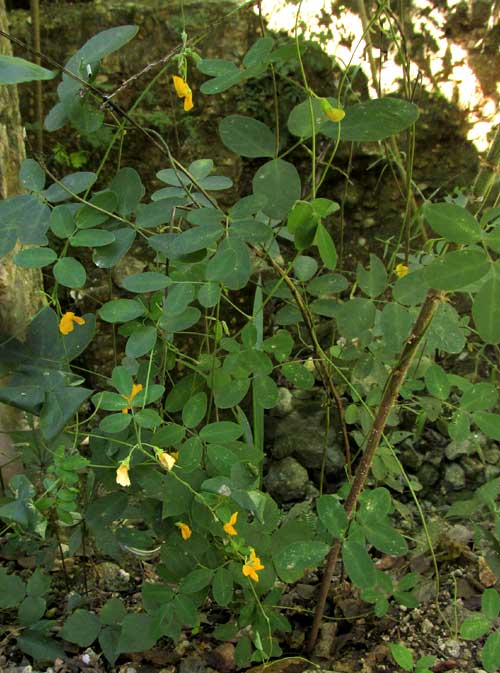Excerpts from Jim Conrad's
Naturalist Newsletter
from the December 3, 2017 Newsletter issued from Rancho Regenesis near Ek Balam about 20kms north of Valladolid, central Yucatán, MÉXICO
CHAETOCALYX VINE
I have no idea why such interesting plants populate the rim of the deep pit beside the hut. For whatever reason, twining up the stem of the pagoda-shaped tick-trefoil recently considered, a delicate vine this week has begun issuing pretty yellow flowers, as shown below:

Even at that distance we can see that the yellow blossoms are typical of the Bean Family, the Fabaceae, plus the pinnately compound leaves are just what we'd expect of that family. A leaf close-up appears below:

The flowers are structured like those on a garden bean vine, so they're "papilionaceous" with a top petal, the banner, expanded to attract pollinators with its color, two side petals known as wings, and the corolla's two bottom petals fused along their common margins to form a scoop-shaped "keel," all seen below:

The banner bends backwards exceptionally far, shown below:

In that photo notice the vegetative parts' covering of short, dense, soft hairs. The leaves are similarly soft-hairy, or "velutinous." Also, see how the flower arises from a slender, twining vine.
Since quite a number of Bean Family vines occur here, I thought that identification of this species might prove to be hard, so the corolla's wings and keel were removed to reveal the sexual parts, as seen below:
